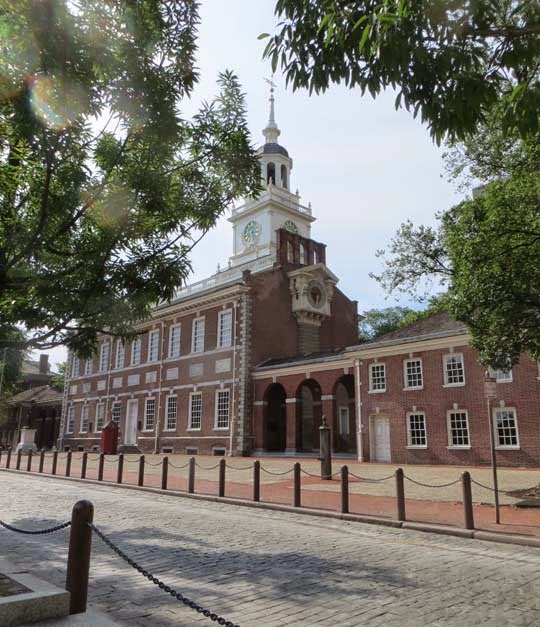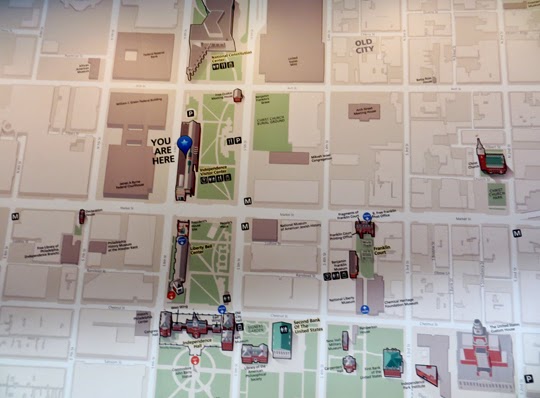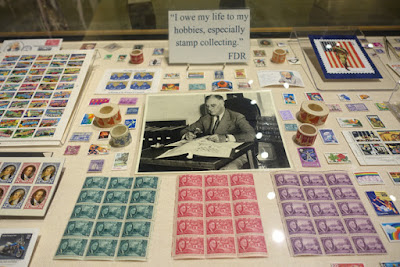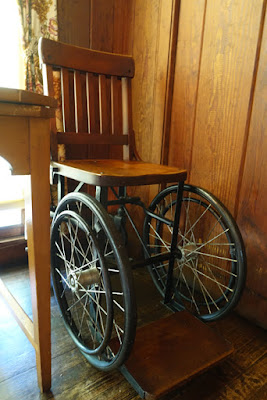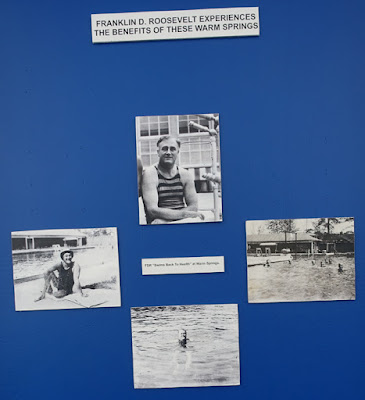52 Places to Go: Week 27
Reliving History
The hot July sun beat down on the sloping field in southern Pennsylvania, just as it had on July 1-3, 1863 when the Battle of Gettysburg was fought in this quiet farm community just north of the Mason-Dixon line. I wished we had brought parasols like those I saw carried by the hoop-skirted ladies hovering at the edge of the crowd. Directly in front of us, on the stubble of cut hay, we watched gray uniformed Union soldiers loading their cannons. On the other side, beyond a stone wall, Confederate soldiers, armed with their own cannons and muskets, lined up their ammunition while drummer boys and flag bearers got ready to lead the charge. The regiment doctor, his white apron already stained, prepared to treat the wounded.
History was repeating itself--or so it seemed. This time, however, the soldiers and ladies dressed in 1860's attire were actors playing parts. Observers sat safely on bleachers or stood along the sidelines while the action was narrated over a loudspeaker. (The announcer also filled us in on background information--a benefit for people like me who were a bit rusty on Civil War history.)
KA-BOOM! The first cannon volley thundered across the field and smoke billowed skyward. Soldiers marched forward and fell in battle. KA-BOOM! KA-BOOM! KA-BOOM! For nearly an hour the cannons boomed and muskets fired with deafening realism. When the attack was over “victims” jumped up unharmed and the soldiers, sweltering in their authentic woolen uniforms, guzzled Gatorade.
Pickett's Charge
We were outside the small town of Gettysburg, Pennsylvania, at the reenactment of Pickett’s Charge, an authentic recreation of this pivotal Civil War battle presented by Gettysburg Living History Inc., one of several living history companies that stage Civil War events in Gettysburg. Every year during the 4th of July weekend thousands of Civil War reenactors from all over the United States congregate in Gettysburg to recreate events ranging from battles and drill competitions to medical demonstrations and fife and drum concerts. They also put on fashion shows, art exhibits, impersonations, and talks. Some events are free while others require tickets.
For my family, watching and talking with the reenactors was an ideal opportunity to visualize history as it happened. Dressed in authentic clothing and living in a tent encampment for the long weekend, the reenactors at Herr’s Ridge lived and breathed the history of the Civil War era. Although there are excellent exhibits at the National Park Visitor Center and other museums in town nothing makes history more real than meeting people who have incorporated it into their lives.
What the Women Wore
When the battle was over the announcer invited us to walk on the battlefield and through the encampment. While the men in our group examined weapons and cannonballs, my daughter and I were much more interested in talking with the women. Many wore elaborate costumes, varying from hoop skirts and sheer dimity summer dresses to more practical shirtwaists and sunbonnets. We learned that women reenactors had to carefully research their costumes to make sure that each part was consistent both with the time period and their character’s age and social class. Snoods, or hairnets, for instance, were only worn by young women during that period and were a kind of fashion fad.
We chatted with two women whose husbands had been on the battlefield. Both said they had been drawn into reenacting by their husbands’ military interest but once “bitten by the bug” it was hard to resist becoming an enthusiastic participant. Weekends such as this one were family events and included children who were also dressed in period clothing.
When we asked about the authenticity of women and children at this event we got a short history lesson on women’s participation in the Civil War. While most women stayed at home during the Civil War, maintaining the family farm or business while their husbands were fighting, many wives followed the camps, especially if their own homes had been destroyed by the war and they had no relatives to take them in. In a few cases, women disguised themselves as men, and fought as soldiers. If they were discovered, they were evicted from camp and lucky not to be shot for treason.
Sutlers and Vendors
At the Herr’s Ridge battlefield we also visited the area designated for sutlers and vendors. A “sutler,” I learned, is a person who follows an army for the purpose of selling the troops provisions, liquor, etc. The tented sutler and vendor booths contained everything from modern day food and drink to genuine and authentic reproduction Civil War uniforms and weapons. Reenactors are expected to be completely accurate down the stitching on the uniforms.
Vendors also sold women and children’s clothing, household goods and toys of the period. In a booth that specialized in jewelry I learned another new word, “chatelaine,” an ornamental clasp that the mistress of a house wore at her waist and which had hooks for attaching keys to the pantry, a watch, and perhaps a small purse. The chatelaine we examined was of chased silver and clearly meant as a status symbol as well as a practical item.
Steeping Yourself in History

If you want to thoroughly steep yourself in the Civil War era you can stay in the recently renovated historic Gettysburg Hotel and eat at the Dobbin House Tavern. Other area attractions include the National Park Service Visitor Center and Cyclorama on Taneytown Road, tours of Dwight Eisenhower’s farm (tickets and shuttle from the Visitor Center), and the national cemetery across from the Visitor Center.
If you like your history dramatized, you should plan your trip to Gettysburg so that it includes a summer weekend. Reenactments of various kinds of Civil War events occur on almost every weekend between May and October. Another way to put drama into your trip is to tour the battlefields by trolley. The tour guide plays the part of several Civil War characters. (We chose instead to buy the Auto Tape Tour at the National Civil War Wax Museum, 297 Steinwehr Avenue, for a self tour so that we could visit at our own pace.)
Getting there: Fly to Harrisburg, Pennsylvania and then go by car to Gettysburg. (South on 15 from Harrisburg, exiting on US 30 to Gettysburg. A scenic 39 mile drive.)
Current Gettysburg information: Gettysburg go to http://www.gettysburgaddress.com. Click on reenactments for current information.
This article was first posted 4/13/11. The trip occurred in July 1997. For a few more pictures from the trip click HERE. You can find information about current reenactments at Gettysburg by searching the web.
All text and photographs copyright Caroline Arnold.

